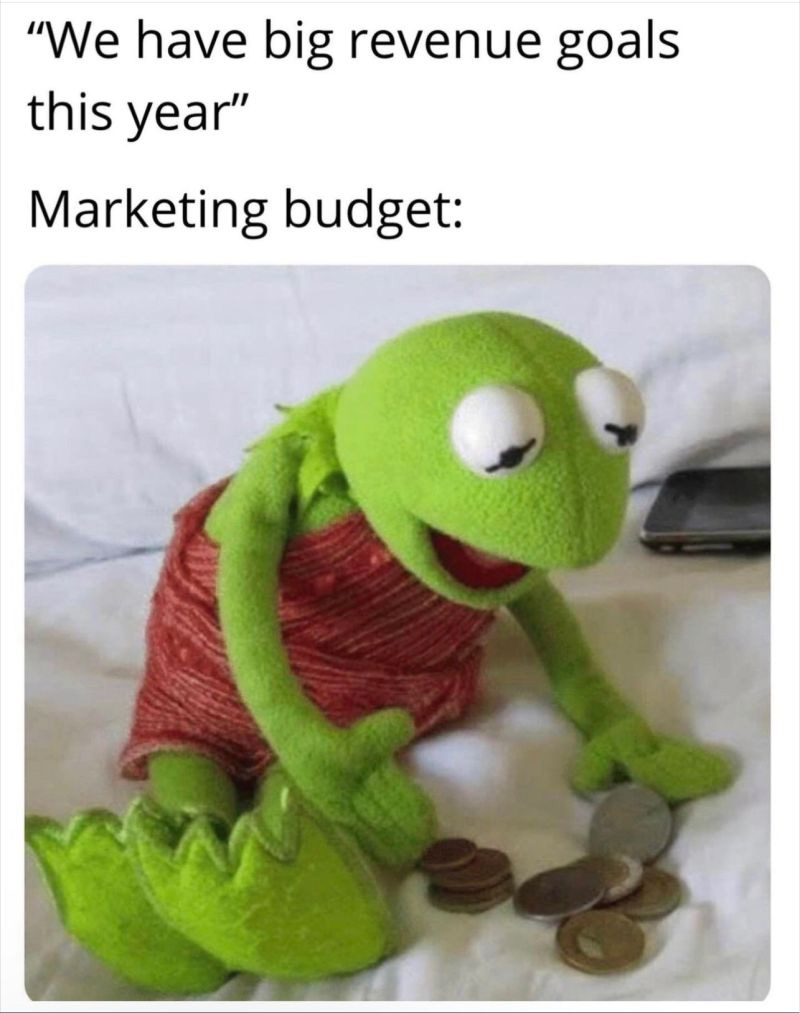Advertising has many purposes for banks and credit unions. These goals include but are not limited to growing brand recognition, selling financial products, converting current account holders, and building brand loyalty. To meet these objectives, financial institution marketers must make careful decisions balancing the institution’s goals and available resources.

Which is really just a fancy way of saying, “How do we get the most bang for our buck?” Because, let’s face it, marketers are usually expected to make miracles happen on shoestrings.
What is advertising waste?
In the world of tiny budgets and huge expectations, the game is often to find the biggest opportunities at the lowest possible cost. Advertising sales can prey upon the “budget” mentality. They put together “budget-friendly” packages that offer big impression numbers for reasonable prices. What marketer isn’t attracted to 15-second video ad placements for less than two pennies an impression?
But financial institution marketers have to be careful. What seems like an excellent deal is often not money well spent and can quickly lead to advertising waste.
Advertising waste is created when campaigns fail to meet their intended purpose. In some cases, this problem can be caused by a bad headline or improperly chosen imagery. Occasionally, waste can be generated by bad placements such as too low on website pages or emails, not being in a high-traffic area of a city, or simply not being positioned where the appropriate people will view the message. Of course, the biggest contributor to advertising waste is bad targeting.
Why does most “traditional” media generate waste?
That 15-second ad with the amazing cost per impression? Over half of those individuals are likely to be the incorrect audience. If you’re paying for one million impressions at a penny per, but only a couple hundred thousand of those reach your target, the real cost is closer to $100 per thousand (CPM).
Marketers look at large impression volumes as a way to improve general brand awareness. And they’re not wrong. But many versions of “traditional” media such as television, radio, and billboards need to be strategically selected for the maximum number of meaningful impressions.
Rather than focusing one hundred percent on getting a “good deal,” financial institution marketers with small budgets must place emphasis on making each dollar count. Instead of one-size-fits-all campaigns, brand awareness may be better served by placing brand-representative messaging in locations and media spots that have proven popular with the bank or credit union’s targeted demographics.
Examples might include convenience stores, online video games like Fortnight, and social media platforms like TikTok to reach Gen Z. Millennials are more likely to get the message on video streaming services like Hulu and Netflix, in and around popular retail stores, on YouTube, and, of course, social media platforms like Facebook, Twitter, and Instagram. But if you want to grab Gen X’s attention, traditional television ads are still a big focus.
Digital advertising looks prettier but beware the advertising waste monster
Keyword, or pay-per-click advertising, is another potential trap for financial institution marketers. The most popular service, Google Ads, bases cost-per-click on demand for specific words. But, the program can quickly turn into a money sink if it is not properly monitored, updated, and manipulated for maximum effectiveness.
The primary contributors to advertising waste in digital marketing can be attributed to lazy execution, leading to inaccurate targeting and bad data. Studies show targeting is a severe failing in thirty-five percent of campaigns. Poor data management is a major factor in over a quarter of campaigns, while data quality tops the list (37%) as a primary failing for digital campaigns.
Financial institution marketers looking to leverage digital advertising and marketing while still meeting goals and budgets need to make sure they have a strategy to focus heavily on data and demographics. Managing those two aspects throughout each campaign will help save money, improve success rates, and reduce advertising waste.
Real targeting makes a BIG difference
It is easier to offer new products and services to existing account holders. On average, sixty-three percent of new business comes from existing clients. As such, keeping and expanding relationships with current accounts is essential to any financial institution’s ongoing success. But, nearly three-quarters (70%) of consumers say their brand loyalty depends heavily on feeling the brand understands their needs.
Which really means they want messaging that feels designed for them. The demand should be an easy ask for banks and credit unions that handle the intimate details of their account holders’ day-to-day finances. The trick is finding advertising opportunities that are able to leverage that data – like at the ATM.
Today’s ATMs have some incredible capabilities that can help financial institutions put their account holder data to use. Even better, ATM users expect to see financial messages while they are interacting with their accounts – eliminating the security concerns and creep factor some might find with hyper-targeted messaging elsewhere.
Wait…ATMs for targeted marketing?!
With the right ATM partner and software, banks and credit unions can offer specific messaging by BIN to target debit card holders, credit card holders, or even the competition. In some cases, it is possible to get even more granular. With PAN-based advertising, institutions can provide messaging to groups of account holders or even unique individuals. And these hyper-targeted, attractive messages can be delivered mid-transaction when the ATM user’s attention is focused on-screen.
Advertising waste is a real problem for financial institution marketers, especially those on a tight budget. Credit unions and banks have to be careful with their strategy and execution with not only “traditional advertising” but many newer digital advertising platforms, as well. Fortunately, there are cost-effective ways (like the ATM) to provide hyper-targeted messages that can help financial institutions balance more challenging options, meet their strategic objectives, and avoid blowing the budget.
